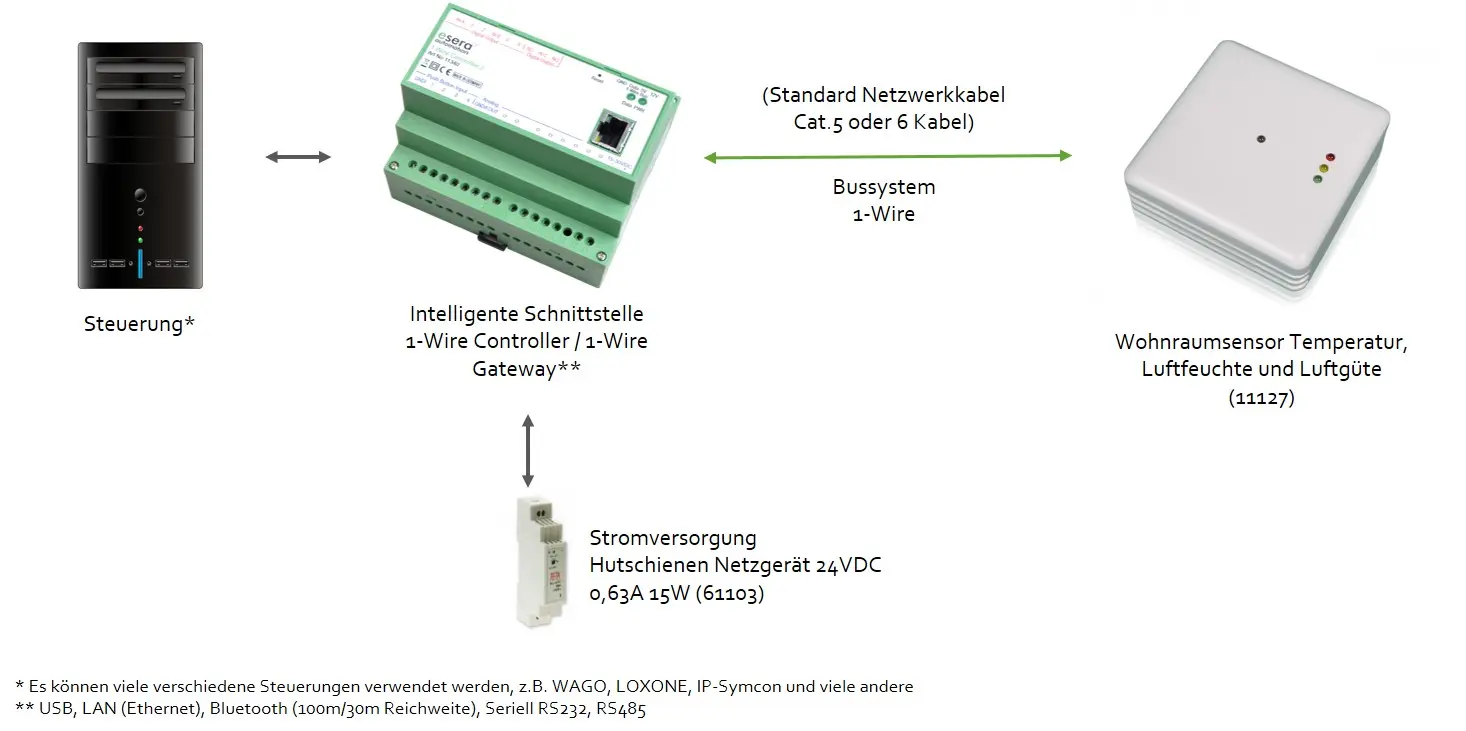Sensor function Air Quality sensor
The 1-Wire Multisensors or 1-Wire Air Quality sensors detect the air quality of a living space and thus provide useful information as to whether ventilation is necessary or whether a ventilation system should increase the ventilation level.
Especially in the autumn and winter months, we humans tend to ventilate our living spaces too little or too short. Not to mention the night hours, when we use up oxygen but cannot open a window. This is where our 1-Wire Air Quality / Multisensors come in handy and provide information about the air in our homes.
Often these 1-Wire Multisensors / 1-Wire Air Quality sensors are also called "fug sensors", because they do not only detect CO2, but a wide range of substances in our indoor air. This type of air quality measurement is not about a highly accurate measurement, but rather about outputting values for "good", "sufficient" or "ventilation", comparable to a traffic light.
The 1-Wire Multisensor 11151 has these "air quality traffic lights" in the form of LED displays in green, yellow and red. This means that the air quality is directly signalled visually.
All 1-Wire Multisensors / 1-Wire Air Quality sensors output a measured value of the air quality.
Via the 1-Wire Controller / 1-Wire Gateway devices, the measured values are output directly based on (equivalent) the values of CO2 sensors.
The 1-Wire Multisensors Pro Art. No. 11151 and 11152 include a temperature sensor, relative Humidity sensor and Air Quality sensor. The 1-Wire Air Quality Sensor Pro 11161 is a pure Air Quality sensor.
The 1-Wire Multisensors / 1-Wire Air Quality sensors are the optimal living space sensors for controlling a heating or ventilation system. The 1-Wire Multisensors can be used for all types of room air monitoring in commercial and educational areas. Even a demand-oriented fan control in toilets and sanitary areas is possible.
Besides CO2, body vapours such as alcohol, sweat, ammonia and various solvents are also detected.
Stand-Alone operation Air Quality sensor with Air Quality traffic light
The ESERA Air Quality living space sensor can also be operated without connection to a 1-Wire Bus system thanks to the integrated air quality traffic light. Only a power supply with 5V DC voltage is required. Due to the internal sensor controller, stand-alone operation is possible at any time. The ambient air is also analysed and a qualified statement about the air quality traffic light is output. Thus, every room can be monitored, with or without connection to a home automation system..



